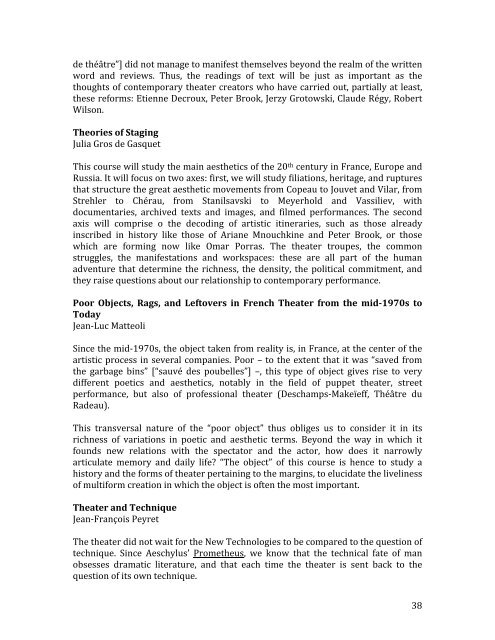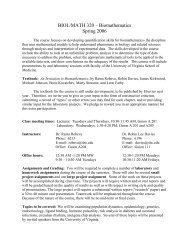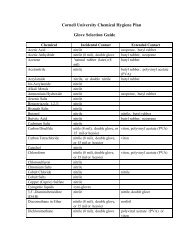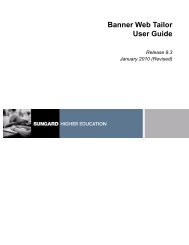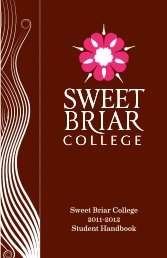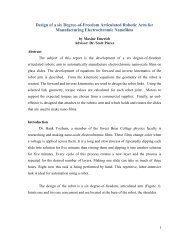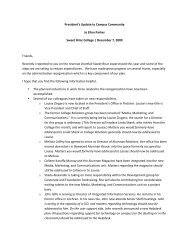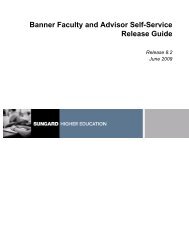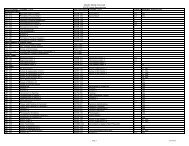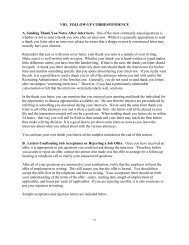Brochure - English translations of course offerings
Brochure - English translations of course offerings
Brochure - English translations of course offerings
Create successful ePaper yourself
Turn your PDF publications into a flip-book with our unique Google optimized e-Paper software.
de théâtre”] did not manage to manifest themselves beyond the realm <strong>of</strong> the written <br />
word and reviews. Thus, the readings <strong>of</strong> text will be just as important as the <br />
thoughts <strong>of</strong> contemporary theater creators who have carried out, partially at least, <br />
these reforms: Etienne Decroux, Peter Brook, Jerzy Grotowski, Claude Régy, Robert <br />
Wilson. <br />
Theories <strong>of</strong> Staging <br />
Julia Gros de Gasquet <br />
This <strong>course</strong> will study the main aesthetics <strong>of</strong> the 20 th century in France, Europe and <br />
Russia. It will focus on two axes: first, we will study filiations, heritage, and ruptures <br />
that structure the great aesthetic movements from Copeau to Jouvet and Vilar, from <br />
Strehler to Chérau, from Stanilsavski to Meyerhold and Vassiliev, with <br />
documentaries, archived texts and images, and filmed performances. The second <br />
axis will comprise o the decoding <strong>of</strong> artistic itineraries, such as those already <br />
inscribed in history like those <strong>of</strong> Ariane Mnouchkine and Peter Brook, or those <br />
which are forming now like Omar Porras. The theater troupes, the common <br />
struggles, the manifestations and workspaces: these are all part <strong>of</strong> the human <br />
adventure that determine the richness, the density, the political commitment, and <br />
they raise questions about our relationship to contemporary performance. <br />
Poor Objects, Rags, and Leftovers in French Theater from the mid-1970s to <br />
Today <br />
Jean-‐Luc Matteoli <br />
Since the mid-‐1970s, the object taken from reality is, in France, at the center <strong>of</strong> the <br />
artistic process in several companies. Poor – to the extent that it was “saved from <br />
the garbage bins” [“sauvé des poubelles”] –, this type <strong>of</strong> object gives rise to very <br />
different poetics and aesthetics, notably in the field <strong>of</strong> puppet theater, street <br />
performance, but also <strong>of</strong> pr<strong>of</strong>essional theater (Deschamps-‐Makeïeff, Théâtre du <br />
Radeau). <br />
This transversal nature <strong>of</strong> the “poor object” thus obliges us to consider it in its <br />
richness <strong>of</strong> variations in poetic and aesthetic terms. Beyond the way in which it <br />
founds new relations with the spectator and the actor, how does it narrowly <br />
articulate memory and daily life? “The object” <strong>of</strong> this <strong>course</strong> is hence to study a <br />
history and the forms <strong>of</strong> theater pertaining to the margins, to elucidate the liveliness <br />
<strong>of</strong> multiform creation in which the object is <strong>of</strong>ten the most important. <br />
Theater and Technique <br />
Jean-‐François Peyret <br />
The theater did not wait for the New Technologies to be compared to the question <strong>of</strong> <br />
technique. Since Aeschylus’ Prometheus, we know that the technical fate <strong>of</strong> man <br />
obsesses dramatic literature, and that each time the theater is sent back to the <br />
question <strong>of</strong> its own technique. <br />
<br />
38


